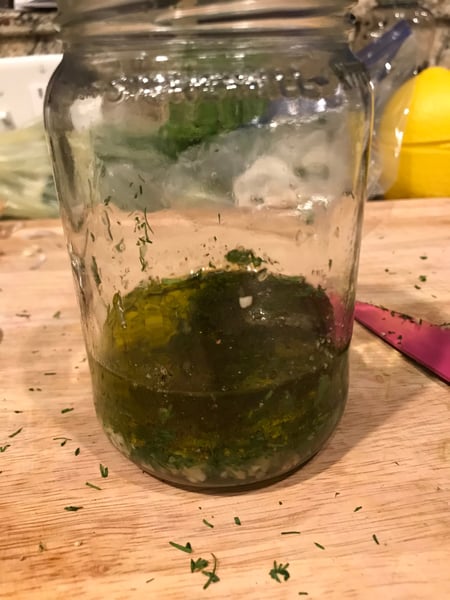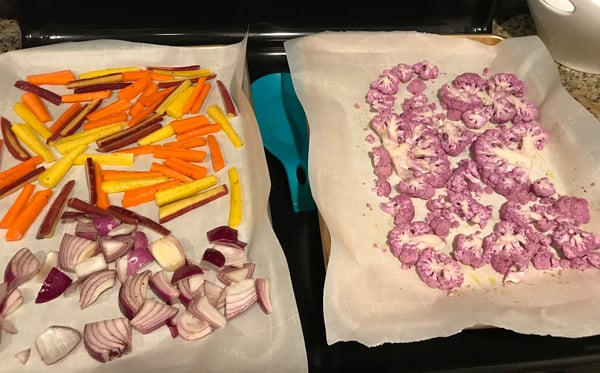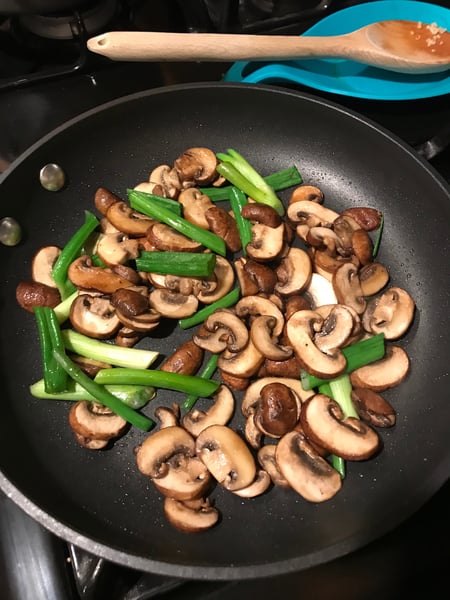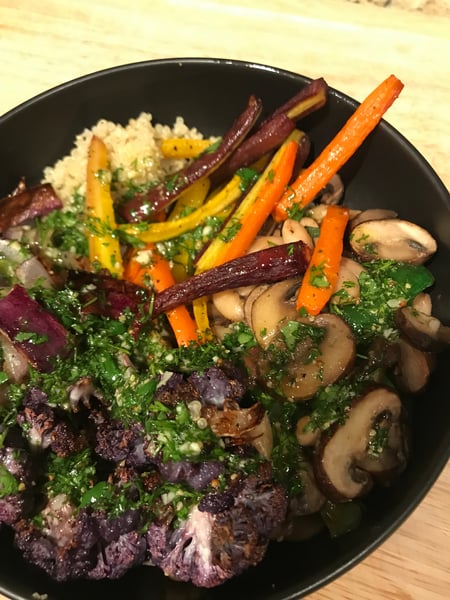
I recently watched the Netflix series “Salt, Fat, Acid, Heat.” In four episodes, chef and food writer Samin Nosrat travels the world to explore the basic elements of flavor and how they are used in different cuisines. A main goal of the show and cookbook is to help people understand the origins of food and to build flavor without a recipe. Enthralled in this food exploration, I thought about how this applies in healthy cooking, particularly salt and fat. The very same flavor philosophies and concepts can be applied in healthy cooking with some minor tweaks.
Salt
“If you want to bring out the flavor of the natural ingredient, then you use salt.”
We overly worry about using salt in our cooking when it comes to health. You should absolutely monitor your salt intake if you have been advised to do so. Choose to cook and eat fresh foods. Add salt as you cook and you won’t need to add it at the table. Cooking Light explains The Truth about Salt and how adding it in the cooking process does not add as much sodium to the end product as we might think. The type of salt also impacts flavor. Use The Chopping Block's Owner/Chef Shelley Young’s Salt 101 to guide your salt selection and learn more.
Fat
“The fat that you choose sets the dish off on a path”
Fat provides flavor. In the Netflix series, Nosrat takes viewers on a journey through the origins of all different forms of fats, the good and the not-so-good for you. To cook for good health, work with healthy fats, monounsaturated and polyunsaturated, first and foremost. Instead of selecting butter or pork fat for your everyday cooking, select extra virgin olive oil, grape seed oil, or avocado oil. Reserve the fats high in saturated fat for more special occasions and consume less frequently.
Acid
“Acidic ingredients mellow becoming subtle, but essential flavors in a dish while acting as a counterpoint to salty, fatty, sweet, and starchy foods.”
Good recipes will typically include a source of acid. Citrus, vinegar, wine, tomatoes, fermented foods (including cheese, pickles and beer) are all considered acidic foods. I love making sauces or dressings that include acid to top almost any dish. If you are looking for something to give the flavor an extra boost, look here.
Heat
“The goal is always the same. Apply the right level of heat so that the surface of the food and its interior are done cooking at the same time.”
Heat can also affect nutrients in food. Vitamin C is sensitive to heat and easily destroyed in the cooking process. Add citrus juices, such as lemon, after a dish has cooled slightly. Olive oil loses some of its nutritional value when cooked over high heat due to its low smoke point. Utilize healthy oils with a higher smoke point, such as grapeseed or avocado, for cooking and reserve extra virgin olive oil for flavor.
In the last episode, Nosrat cooks a beautiful roasted vegetable salad with herbs, oil, and feta. Here is my variation including salt, fat, acid, and heat:
Roasted Vegetable & White Bean Bowl with Herby Sauce
*Chop up your favorite vegetables, tossing them with olive oil, salt, pepper and roasting them on a sheet pan. Top with sauce.
Yield: about 2-3 servings
For the Herby Sauce (it is basically a salad dressing):
2 Tablespoons of chopped fresh herbs (I used dill & cilantro)
2 Tablespoons rice vinegar
1 Tablespoons lemon juice
2 garlic cloves, minced
2 teaspoons honey
1 teaspoons whole grain mustard
⅓ cup EVOO
Salt and pepper to taste
Pile all ingredients into a mason jar and shake well!

For the bowl:
½ cup uncooked quinoa
1 14.5 oz can of cannellini beans, drained, rinsed
7 large carrots, peeled and cut into sticks
1 red onion, cut into chunks
1 small head of purple cauliflower, sliced into “steaks”
1 - 8oz package of mushrooms, cleaned and sliced
4 scallions, cut into 2 inch pieces
Olive oil, salt and pepper
1. Roast the vegetables: If you aren’t certain about how to do this, here is a helpful guide. Start by preheating the oven to 400ºF.

2. Cook the quinoa: According to the package instructions. Throw in the beans with the cooked quinoa just to heat them.
3. Saute the mushrooms and scallions: Heat a saute pan over medium-high heat and add about 1-2 tablespoons of oil. Add the mushrooms to the pan with a dash of salt. Cook mushrooms for about 5 minutes, add scallions to the pan. Continue cooking until the mushrooms are lightly browned and the moisture has cooked out of the pan.

4. Build your bowl: Scoop about ½ cup of the quinoa and bean mixture into a bowl. Top with roasted veggies. Drizzle Herby sauce over the bowl and toss.

We just wrapped up a Cook the Book class on "Salt, Fat, Acid, Heat" this month. Join us for April's Cook the Book class where we explore approachable recipes from Yotam Ottolenghi's "Simple." These recipes are packed with his signature Middle Eastern-inspired flavors and feature bright, fresh and complex flavors, but with a familiar and homey approach that focuses on quality ingredients and achievable techniques.

